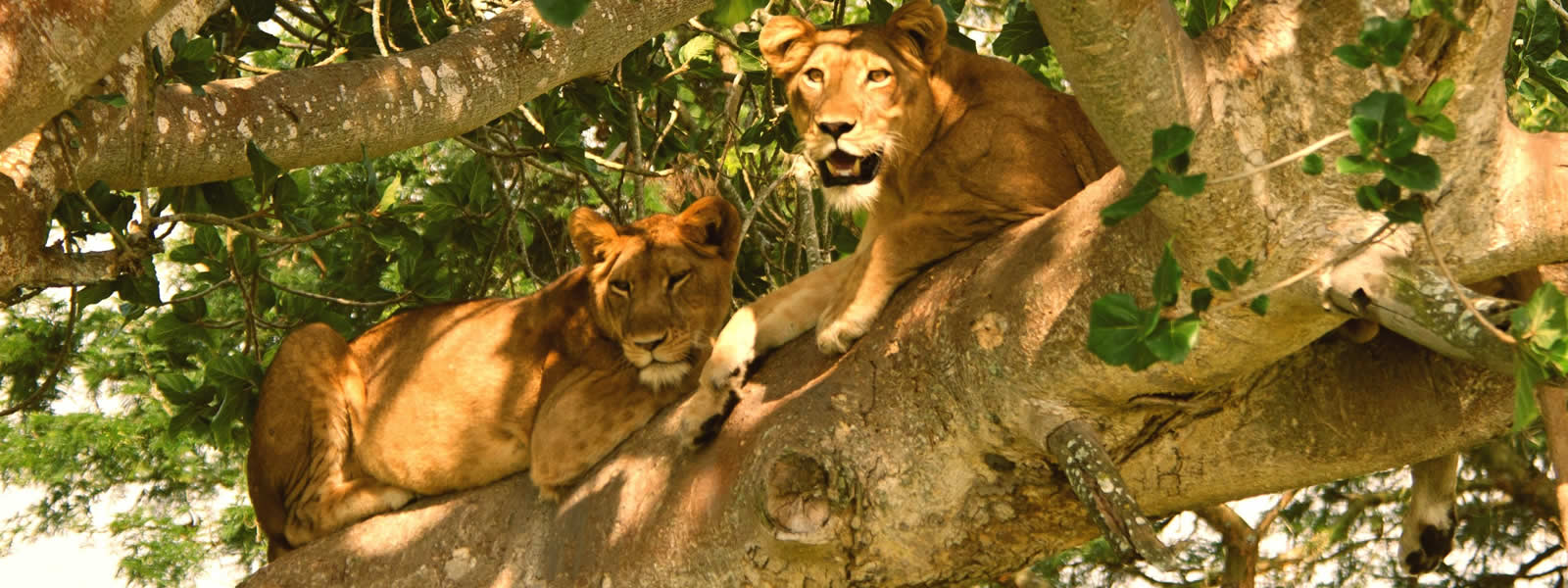Filming In Queen Elizabeth National Park can be done for both commercial and non-commercial needs. However, persons filming for commercial use must secure particular Filming permits & permission allowing them to legally shoot in this park.
Queen Elizabeth National Park – A Little Information about this Park.
Present-day Queen Elizabeth national park was gazetted as a park in 1952 as Kazinga National park and later renamed Queen Elizabeth National Park to commemorate Queen Elizabeth II’s visit in 1954. The park is home to well-over 95 mammals and 600 bird species.
Set against the backdrop of the jagged Rwenzori Mountains, the park’s magnificent vistas include dozens of enormous craters carved dramatically into rolling green hills, panoramic views of the Kazinga Channel with its banks lined with hippos, buffalo and elephants, and the endless Ishasha plains, whose fig trees provide a hide for the tree-climbing lions as they attempt to pounce on herds of unsuspecting Uganda kob.
Related: Facts about Queen Elizabeth National Park in Uganda
What is there to film In Queen Elizabeth National Park?
With the presence of a notable 2913 Elephant herds, 1200 buffaloe, 6000 hippopotami, 27 chimpanzees, leopards, lions, Jackals and a looming bird list of over 600 bird species, Queen Elizabeth National Park takes its place as one of the Best places to film wildlife in Uganda.
Filming suggestions for crew Visiting queen Elizabeth National Park in Uganda:
- Lion Filming In Queen Elizabeth NP
Queen Elizabeth National Park has approximately 120 lions roaming the 2000km² safari park. Lions In Queen Elizabeth National Park can be spotted on a Game drive through the Kasenyi area. The southern sector of the greater Queen Elizabeth Park known as Ishasha – 114kms/ 3-hours drive from Kasenyi area is popular for sightings of the rare tree-climbing lions. The best time to see lions in Queen Elizabeth National Park is in the morning and later afternoon drives – Use the hotter afternoons to nap or enjoy the amenities at your hotel.
Filming tip: The afternoons tend to get warmer and temperatures may affect the full functionality of filming equipment – maximise the cooler hours.
- Leopard filming In Queen Elizabeth NP.
For a fact, Leopards are generally solitary and can be hard to see, however, for film crew intending to film leopards in Queen Elizabeth National Park, we recommend working with the Uganda carnivore project – a multi-disciplinary organization, devoted to the research and conservation of Uganda’s large carnivores, including lions, leopards, and hyenas. The Uganda Carnivore program runs what they call experiential Leopard tracking which involves working closely with one of there researchers to track down leopards, lions and hyenas. The tracker is guided by the signal from the radio collar attached to the animal.
Related: 5 reasons why the animals are fitted with radio collaring.
While mongoose can be largely sighted in all Ten national parks across Uganda, the best place to film Mongoose in Uganda is Queen Elizabeth National Park. On the Mweya Peninsula is where you will be in the company of a mongoose researcher who will guide you in tracking down these little animals. He will share all the knowledge of these interesting creatures.
Related: Mongoose filming in Queen Elizabeth National Park
- Elephant Filming in Queen Elizabeth NP.
Queen Elizabeth National park is known to have the largest number of Elephants in Uganda. There are currently an estimated 2913 individuals that roam the 2000km² safari park. Elephant filming in Queen Elizabeth can be very rewarding especially during the dry season months of January to February and June to July. However, for crew seeking to capture and incorporate some amazing sceneries into their shoot, should consider visiting in the wet season months of March to May and August to December when the park is at its most beautiful.
Related: Elephant filming in Queen Elizabeth National Park
- Hippo Filming In Queen Elizabeth NP.
Queen Elizabeth National Park boasts of a population of 6000 hippopotami that freely roam across the park by night and spend the day cooling off in the waters of the Kazinga channel that connects Lake Gorge and Edward. Hippo filming in Queen Elizabeth National park can be done on both stationed grounds or on a slow-moving boat safari on the Kazinga channel. The best time to film hippos is in the afternoons when they tend to gather in one place and are not on the move.
Related: Hippo filming in Queen Elizabeth National Park
- Shoebill filming in Queen Elizabeth NP.
Other things to film In Queen Elizabeth National Park include; Filming at the local villages bordering the Park where locals traditionally mine salt using the old-style evaporation method, you could also film the locals fishing alongside the hippos on lake gorge & Edward, and for those interested in scenery filming, the explosion craters combined with the large expanses of savannah with a backdrop of the Rwenzori mountains provide an amazing shoot.


